The Future of Real Estate: 2025 Trends Shaping the Market

As we move into 2025, the real estate market continues to evolve, driven by economic shifts, technological advancements, and changing buyer preferences. The way people buy, sell, and invest in properties is undergoing significant transformations, making it more essential than ever to stay well-informed about the latest trends. Whether you're a seasoned real estate investor, a first-time homebuyer, or an industry professional, understanding these developments will help you make strategic and informed decisions. Here’s a comprehensive look at the top real estate trends shaping the market in 2025.
1. The Rise of Smart Homes and AI Integration
Smart home technology is no longer just a luxury for the wealthy—it’s becoming an essential feature that buyers expect in modern homes. With the rapid advancement of artificial intelligence and the Internet of Things (IoT), homes in 2025 are increasingly equipped with smart security systems, energy-efficient devices, and AI-powered home automation solutions. These technologies offer enhanced convenience, security, and cost savings, making homes more attractive to tech-savvy buyers. Features like voice-activated assistants, remote-controlled lighting, automated climate control, and AI-driven home monitoring systems provide an unparalleled level of comfort and efficiency. Many buyers are prioritizing homes that seamlessly integrate these cutting-edge innovations.
What this means for sellers: Upgrading homes with smart technology can increase property value and appeal to a broader audience.
2. Sustainability and Green Living
With increasing concerns about climate change, energy conservation, and rising utility costs, sustainability in real estate is more important than ever. Eco-friendly homes are in high demand as buyers actively seek properties equipped with solar panels, energy-efficient appliances, smart thermostats, and sustainable building materials. Governments are also stepping in, offering incentives for green construction, eco-friendly renovations, and home upgrades that prioritize energy conservation. Buyers are becoming more environmentally conscious and prefer homes that reduce their carbon footprint while also saving money on monthly energy bills.
What this means for buyers: Investing in an energy-efficient home can lead to lower utility bills and long-term savings.
3. The Impact of Remote Work on Housing Preferences
The remote work trend, which surged during the pandemic, has now become a permanent fixture in many industries, significantly influencing housing choices. As more companies continue to embrace flexible work arrangements, homebuyers are prioritizing properties that accommodate remote work lifestyles. Buyers are looking for homes with dedicated office spaces, soundproofing, strong internet connectivity, and proximity to co-working hubs or quiet environments that support productivity. Additionally, suburban and rural areas are experiencing increased demand as remote workers seek larger, more affordable living spaces away from densely populated urban centers, where housing costs tend to be higher.
What this means for sellers: Highlighting home office spaces and high-speed internet can be a major selling point.
4. The Return of the Buyer’s Market?
After years of a competitive seller’s market, many industry experts predict a gradual shift towards a buyer’s market in 2025. Factors such as stabilized mortgage rates, increasing housing inventory, and changing economic conditions are providing buyers with more negotiating power. This shift is particularly evident in urban areas where demand has softened due to high living costs and the continuing trend of remote work. More buyers are finding themselves in a position to negotiate better deals, secure favorable financing terms, and take their time in selecting properties that meet their needs rather than rushing into bidding wars.
What this means for investors: It may be a great time to invest in properties while prices become more competitive.
5. Multigenerational Living on the Rise
Economic pressures, housing affordability challenges, and changing family dynamics are leading more families to embrace multigenerational living. Homebuyers are actively seeking properties that can comfortably accommodate extended families, including in-law suites, dual kitchens, separate entrances, and multiple living areas. This growing trend is driven by the need for financial savings, convenience, and the desire for closer family support systems. With an increasing number of households combining multiple generations under one roof, real estate developers and homebuilders are adapting their designs to meet this demand.
What this means for real estate professionals: Highlighting properties that cater to multigenerational living can attract a wider range of buyers.
6. Short-Term Rentals and the Rise of “Workations”
The short-term rental market continues to thrive, but with a new twist—workations. As remote work becomes more flexible, professionals are opting to work from scenic and desirable locations while enjoying a vacation-like experience. This has led to a surge in demand for short-term rentals in coastal towns, mountainous regions, and picturesque countryside areas. Rental properties equipped with high-speed Wi-Fi, dedicated workspaces, and comfortable amenities are highly sought after by digital nomads and remote employees looking to mix work and leisure seamlessly.
What this means for property owners: Investing in short-term rentals with remote work-friendly features can be a lucrative opportunity.
7. The Growing Popularity of Secondary and Vacation Homes
With hybrid work models becoming more common, more buyers are choosing to invest in secondary or vacation homes. Locations with lower costs of living, beautiful landscapes, and recreational activities are particularly appealing as buyers seek tranquil getaways that still allow them to work remotely when necessary. Whether it's a mountain retreat, a beachside escape, or a quiet lakeside cabin, demand for vacation homes has been steadily rising. These properties serve as both an investment and a personal retreat, making them an attractive option for modern buyers.
What this means for realtors: Marketing vacation homes to remote workers can open up new opportunities in niche markets.
The real estate landscape in 2025 is being shaped by an intersection of technology, sustainability, economic shifts, and evolving lifestyle preferences. Whether you’re buying, selling, or investing in real estate, staying informed about these transformative trends is essential for making well-informed decisions. By embracing new technologies, adapting to buyer demands, and recognizing emerging opportunities, industry professionals and investors can navigate the ever-changing market with confidence. As we move forward, those who remain proactive and adaptable will find themselves well-positioned for success in this dynamic real estate environment.
Categories
Recent Posts










GET MORE INFORMATION


